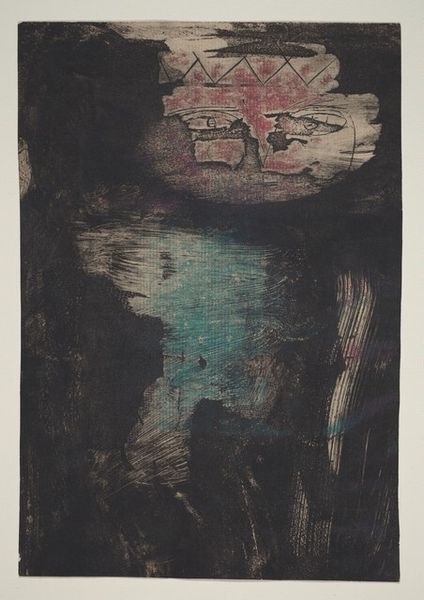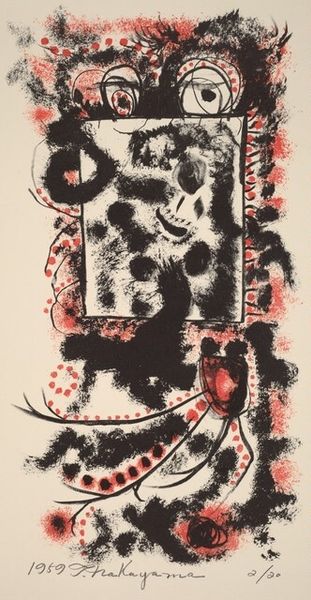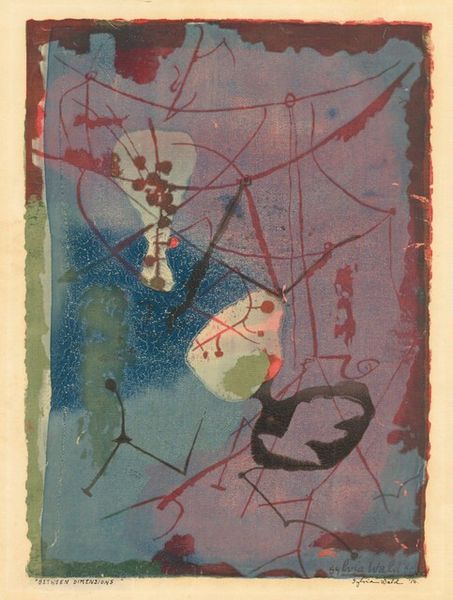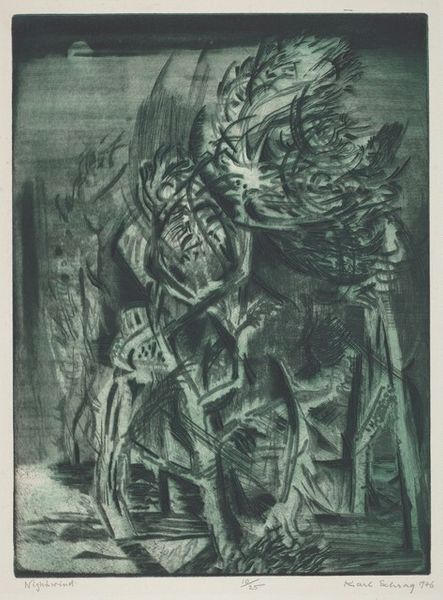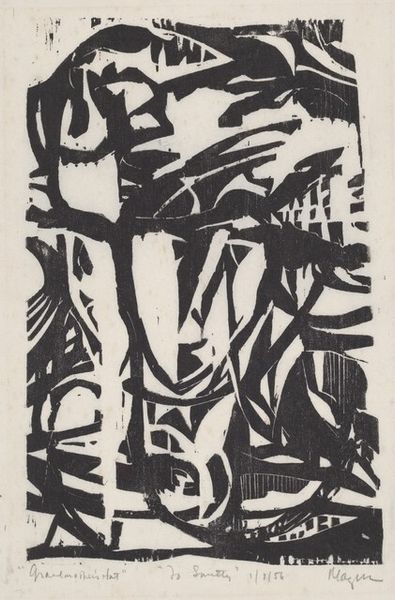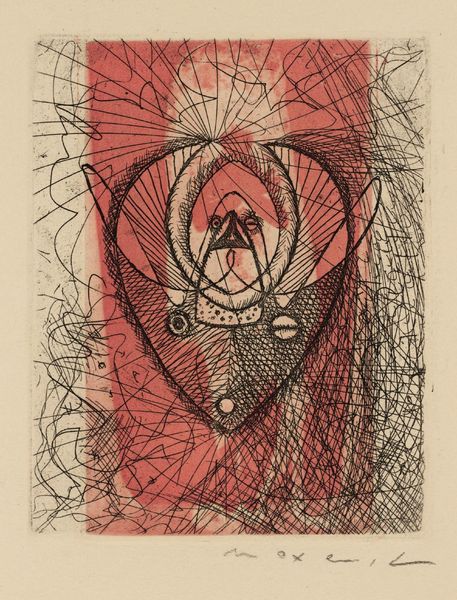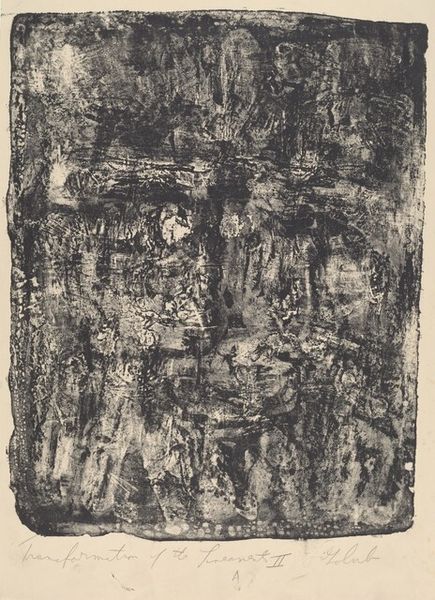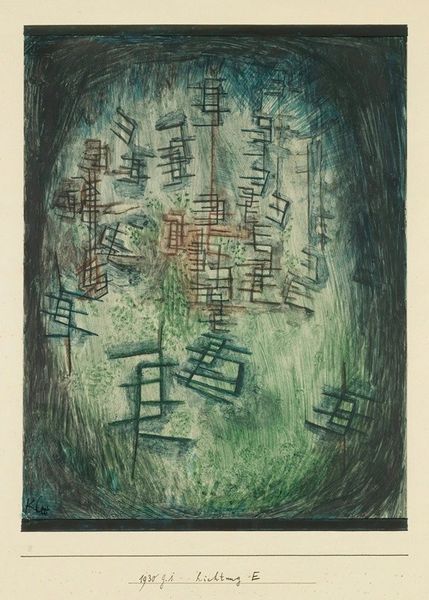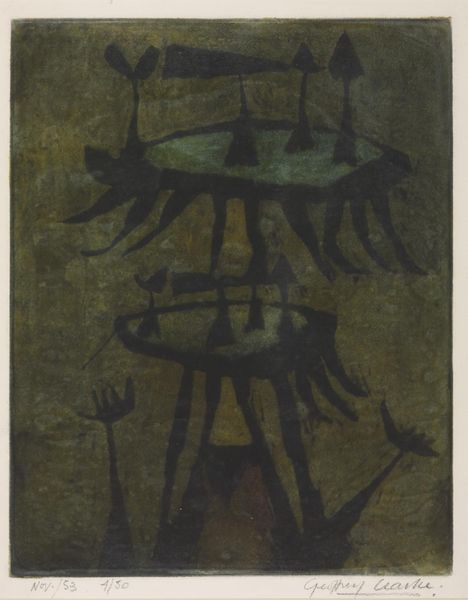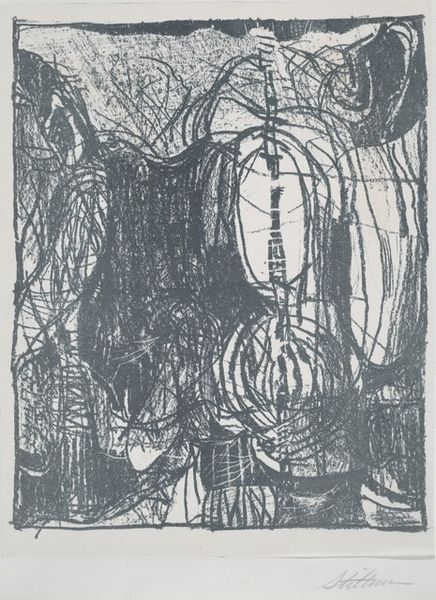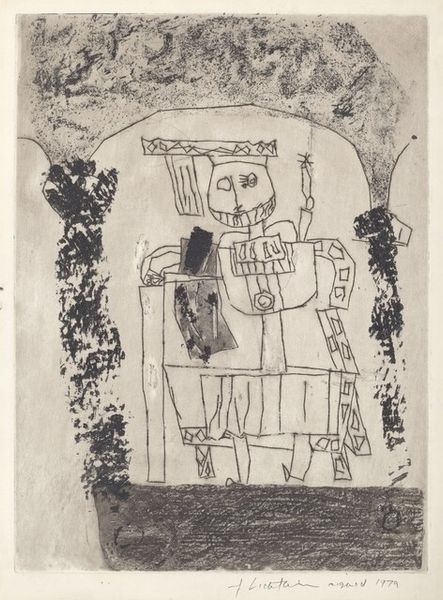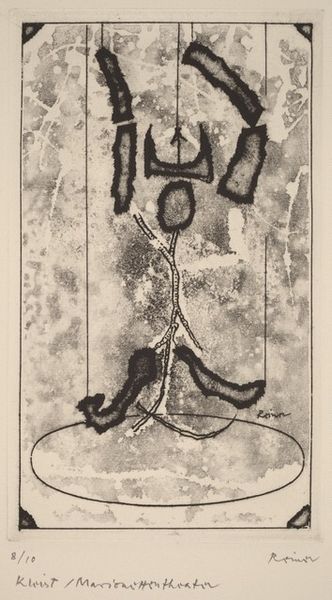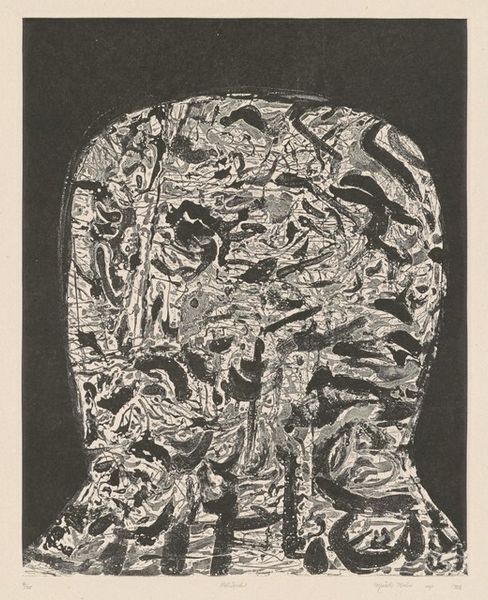
watercolor, ink
#
ink painting
#
watercolor
#
ink
#
geometric
#
expressionism
#
abstraction
#
line
#
watercolour illustration
#
watercolor
Copyright: Public Domain: Artvee
Paul Klee's 'Feuer Clown I' presents us with an enigmatic figure rendered in dark lines against a fiery red backdrop, surrounded by shadowy greens and browns. Born in Switzerland in 1879, Klee's work often reflects his personal experiences and his engagement with the cultural shifts of his time. He once said "Art does not reproduce the visible, rather it makes visible.” In this work, the clown emerges as a symbol laden with contradictions. Traditionally, clowns are figures of entertainment. Yet, Klee's clown has a darker, perhaps more complex, identity. The fiery colors might represent passion, destruction, or transformation, reflecting the anxieties and uncertainties of the early 20th century. The clown’s geometric form appears as though it's being consumed by the surrounding abstract landscape. Consider how Klee subverts the traditional representation of the clown, prompting us to confront the multifaceted nature of identity and the emotional depths that lie beneath the surface.
Comments
No comments
Be the first to comment and join the conversation on the ultimate creative platform.
